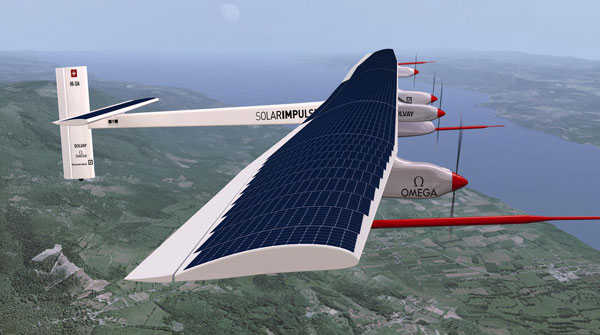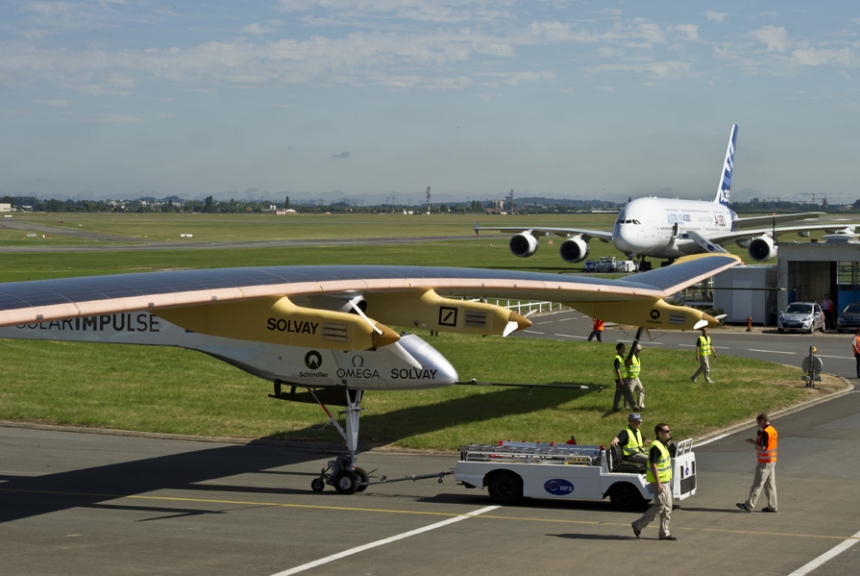Solar Impulse. The revenge of Icarus.
I was inspired to approach the topic of low-carbon travel, after reading Sustainable Energy - without the hot air and realizing that no matter how much effort you make in your daily life to reduce your carbon emissions and live efficiently - take shorter showers, turn down the heat, avoid using a car, eat less meat - as soon as you step onto an airplane, all those nice "efforts" are sadly erased.
As author David MacKay explains, taking one intercontinental roundtrip flight (say London-Los Angeles) consumes approximately 12,000kWh per person - about 30kWh/day for one year. To put that into perspective, that's like leaving your heater on 24/day every day for one whole year. And that's just one flight! If you had to pay that much energy in electricity bills, that'd be $1204 in the US ($2080 in France, and $3942 in Germany!).
What does that mean for expat globetrotters who love to travel and take (gulp) multiple intercontinental flights per year? Is there hope that airplanes will become more efficient? Unfortunately, not really. Aircraft manufacturers are looking to make planes lighter and to increase capacity, but airplanes will still remain gas guzzling beasts.
But what if -
we used the sun to power airplanes?
Solar Impulse, based in Lausanne, Switzerland, is a solar power plane project founded in 2003 by Bertrand Piccard and André Borschberg, and financed by private companies (the four major partners are Solvay, Schindler, Omega, and Deutsche Bank).
Solar-powered planes do exist!
Solar Impulse's first aircraft, the HB-SIA, is a prototype aircraft with 11,628 PV cells, a wingspan of 63.4 meters, a cruise speed of 70 km/hour, and a carrying capacity of 1 person.
Ok, so maybe an airplane that has the same wingspan as an Airbus A340, but goes slower than your grandmother driving and carries 1 measly person might not seem that impressive. But this is the "revenge of Icarus" - an airplane that can fly day and night without using fuel. This is huge!
Why can't the plan go faster and hold more people? The project's major design constraint is the weight and power capacity of the lithium polymer batteries.
This being said, the HB-SIA successfully performed a 26-hour flight in July 2010, a 13-hour international flight in May 2011 (from Switzerland to Belgium), and in the upcoming weeks will perform a 2,500km, 48-hour journey from Switzerland to Morocco -- all being practice flights for a round-the-world flight in 2014 with the upgraded HB-SIB model.
Solar Impulse recognizes that its solar plane project will not revolutionize the aviation industry in the near-term, but they hope to demonstrate that "progress is possible using clean forms of energy".
"Our airplane is not designed to carry passengers, but to carry a message." Bertrand Piccard
I agree that Solar Impulse projects a strong message about the potential of renewable energies - but I am also optimistic (naive maybe?) that solar-powered commercial aviation could one day become a reality.
In the meantime, what should we do about flying? Try to take direct flights instead of flights with stops. Better yet, take a train instead if possible. Better yet, think twice about making the trip.
I know I know, that's sad.
Any other thoughts about the subject?


